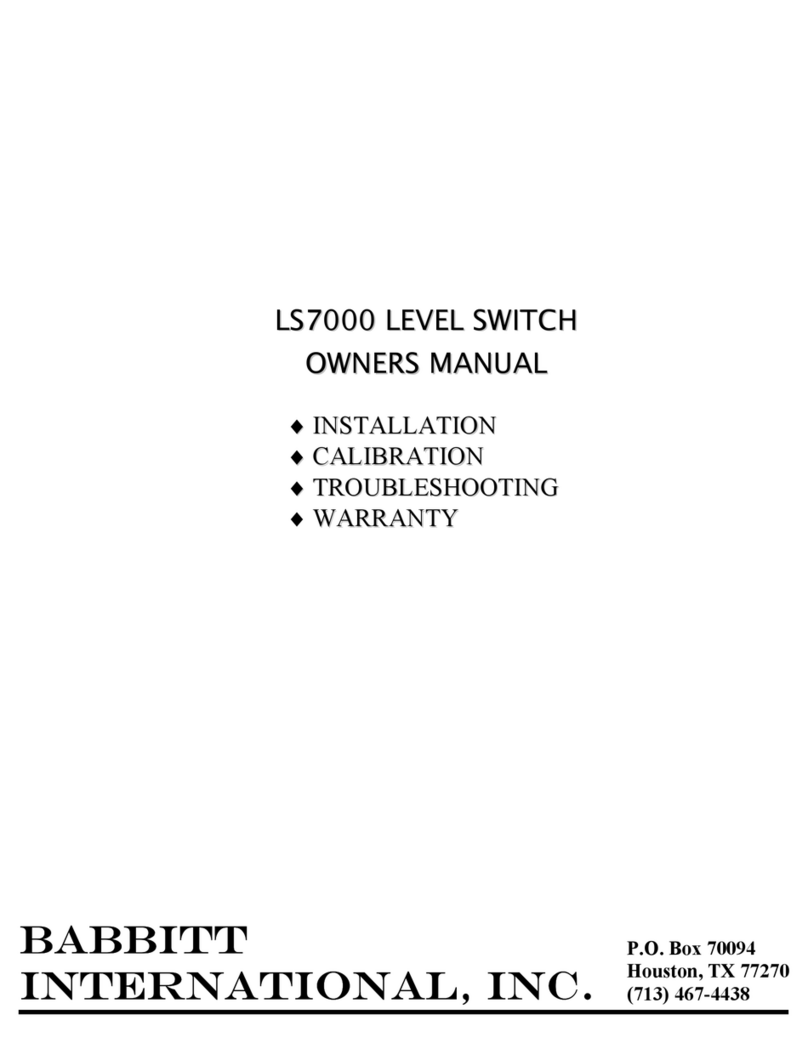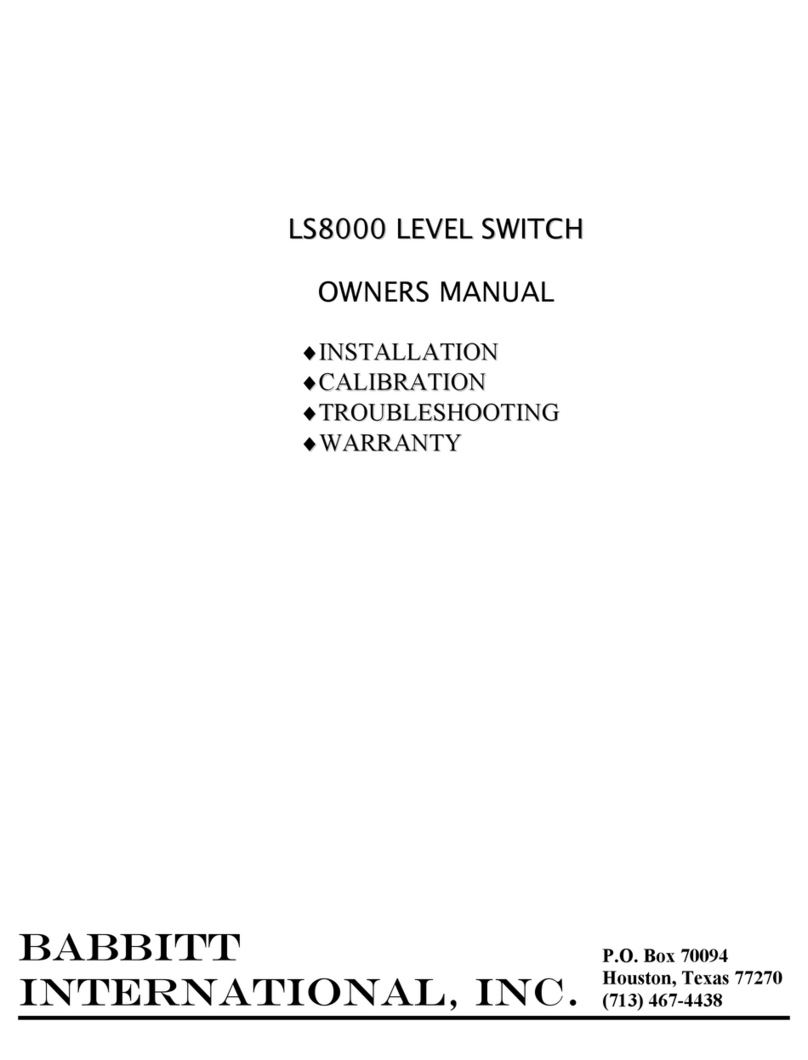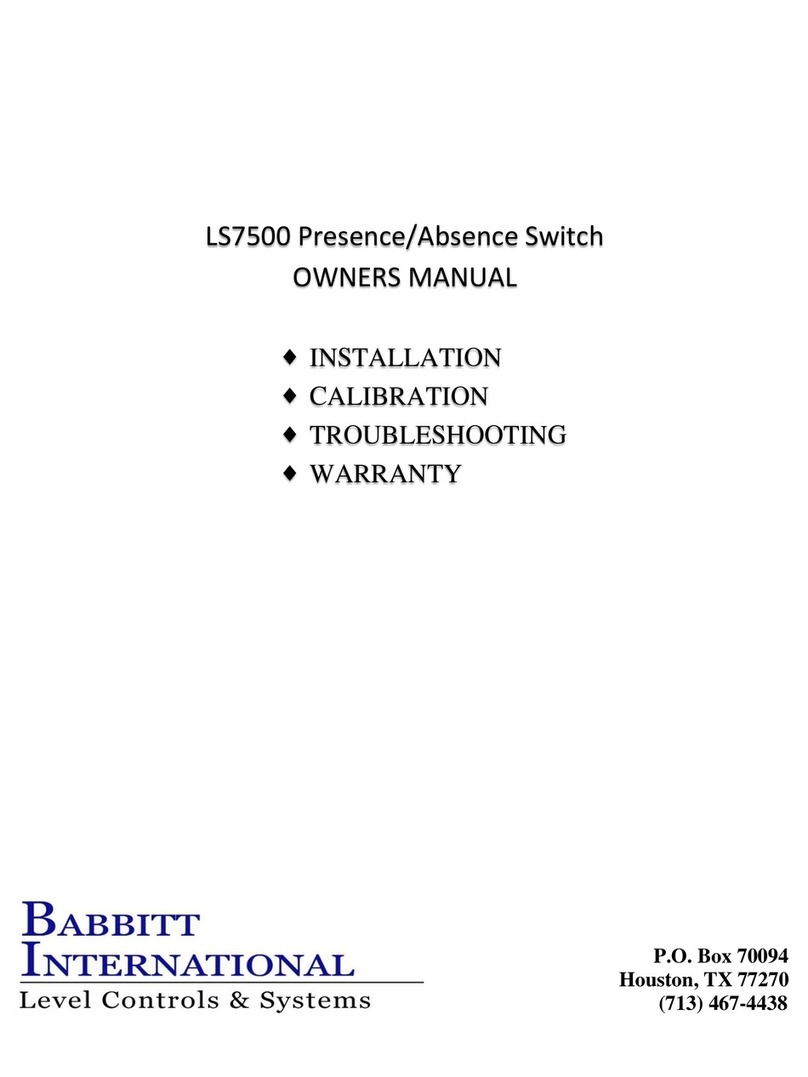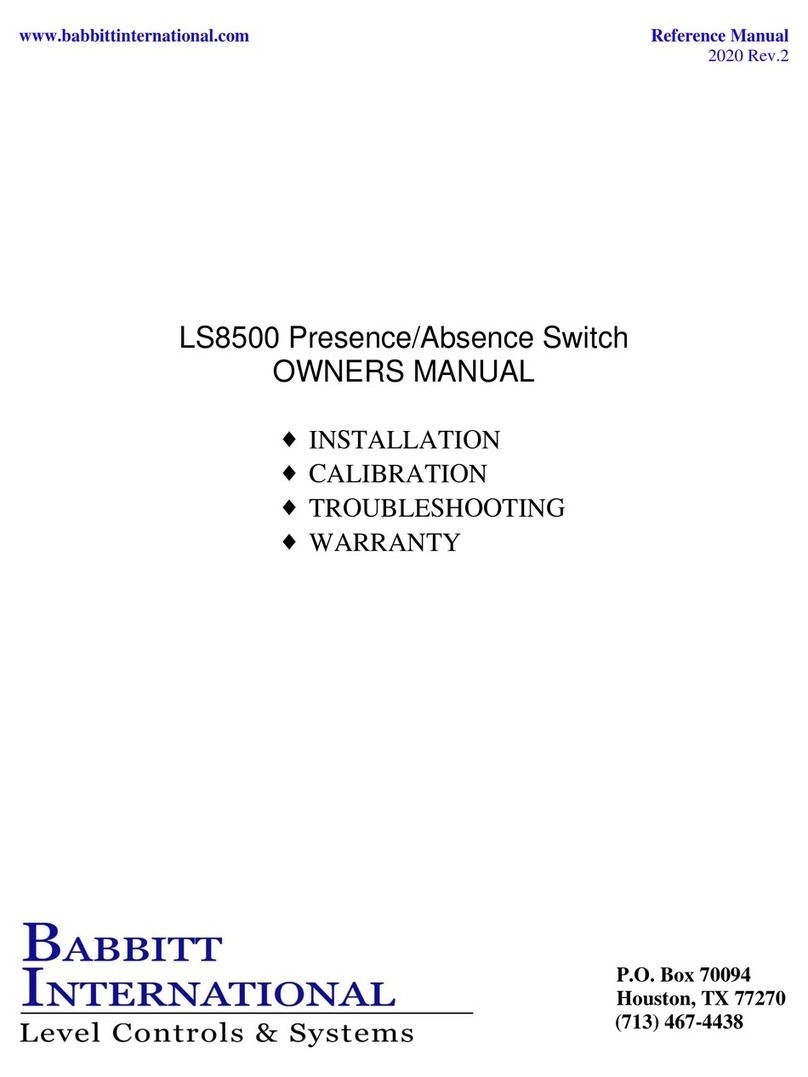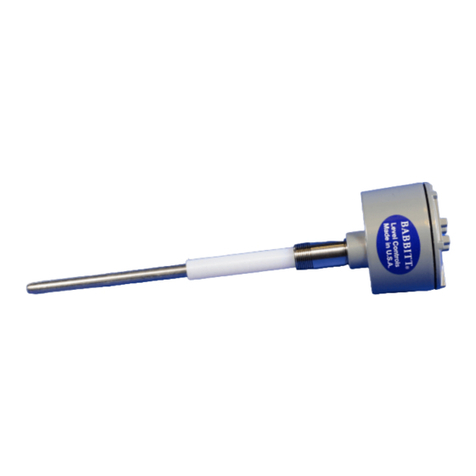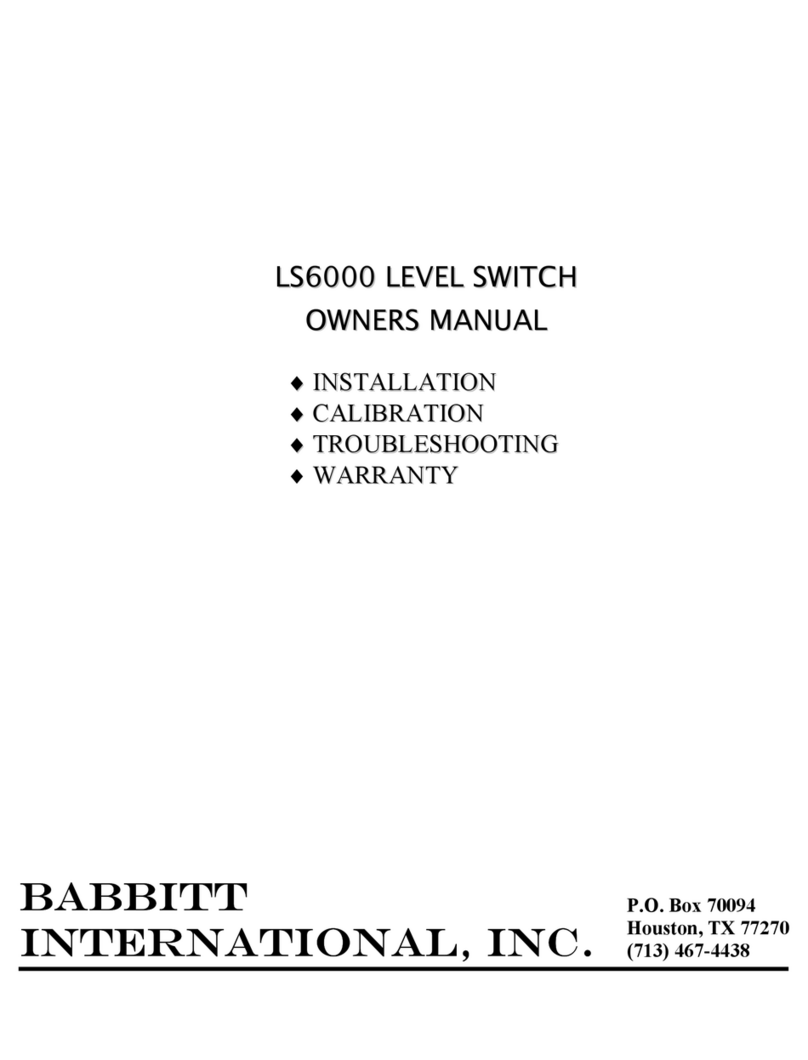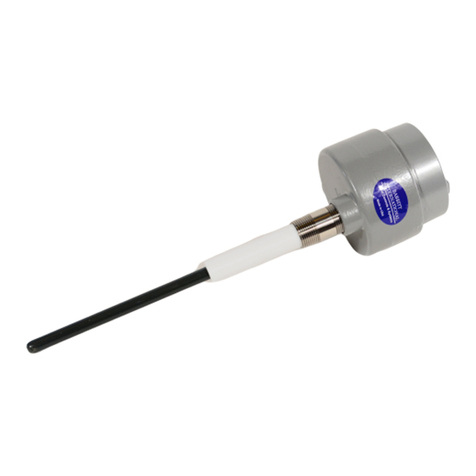
www.babbittinternational.com Reference Manual
2021
3
Table of Contents
1. DESCRIPTION ................................................................................................................................................................. 4
1.1 General Description................................................................................................................................................. 4
1.2 Specifications........................................................................................................................................................... 4
1.3 Ordering Information .............................................................................................................................................. 5
1.4 GA Drawing.............................................................................................................................................................. 6
1.5 Sensor Rings ............................................................................................................................................................ 6
2. THEORY OF OPERATION ................................................................................................................................................ 7
3. INSTALLATION ............................................................................................................................................................... 7
3.1 Inspection ................................................................................................................................................................ 7
3.2 Bench Test ............................................................................................................................................................... 7
3.3 Mounting................................................................................................................................................................. 8
3.3.1 Partial-Ring Flange Location ...................................................................................................................... 8
3.3.2 Full-Ring Flange Location........................................................................................................................... 8
3.3.3 Full Faced Gaskets & Flanges..................................................................................................................... 8
3.4 Physical Installation............................................................................................................................................... 10
3.4 Grounding.............................................................................................................................................................. 10
3.5 Ground Continuity Test ......................................................................................................................................... 10
3.6 Installing the Receiver ........................................................................................................................................... 11
3.7 Typical Applications & Wiring Diagrams: .............................................................................................................. 12
4. CALIBRATION ............................................................................................................................................................... 16
4.1 Sensitivity Calibration –Conductive Materials...................................................................................................... 16
4.2 Sensitivity Calibration –Non-Conductive Materials.............................................................................................. 17
4.3 Time Delay............................................................................................................................................................. 18
4.3 Setting the Time Delay .......................................................................................................................................... 18
4.5 Fail Safe Selection.................................................................................................................................................. 18
5. MAINTENANCE AND TROUBLESHOOTING .................................................................................................................. 19
6. WARRANTY .................................................................................................................................................................. 20
